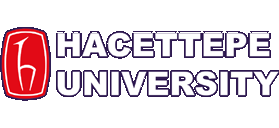ACADEMICS
Course Details
ELE740 - Computer Network Security
2025-2026 Fall term information
The course is not open this term
ELE740 - Computer Network Security
| Program | Theoretıcal hours | Practical hours | Local credit | ECTS credit |
| PhD | 3 | 0 | 3 | 10 |
| Obligation | : | Elective |
| Prerequisite courses | : | - |
| Concurrent courses | : | - |
| Delivery modes | : | Face-to-Face |
| Learning and teaching strategies | : | Lecture, Question and Answer, Problem Solving |
| Course objective | : | It is aimed to give the following topics to the students; Network security tools and applications, |
| Learning outcomes | : | IP Security, Kerberos, S/MIME, SSL/TLS, Malicious software, classifying and countermeasures, Network Security, Email Security, System Security, Firewalls and Applications; Hackers and Countermeasures. A student completing the course successfully will Identify and classify Network Security Problems, Know and use countermeasures related to Network Security , Know advantages and disadvantages related to various algorithms of IP Security andEmail Security, Use techniques and algorithms taught in the classroom, Know and follow Advanced Network Security Algorithms and related publications. |
| Course content | : | Quick Review: Network Security and related topics, Security threats and countermeasures, Computer Security Sistems; concepts and definitions, Authentication and applications, VPN and applications. |
| References | : | Stallings W, Network Security Essentials, Pearson Prentice Hall, 2007. |
| Weeks | Topics |
|---|---|
| 1 | Network Security Tools and Applications |
| 2 | IP Security, VPN, IPSec, Tunnelling Applications |
| 3 | Authentication and Applications, Kerberos, X.509 |
| 4 | Public Key Infrastructure |
| 5 | Email Security, PGP, S/MIME |
| 6 | WEB Securiy, SSL/TLS, SET |
| 7 | Intrusion, Detection and Countermeasures |
| 8 | Malicious Software, viruses and countermeasures |
| 9 | DoS and DDos Attacks, Countermeasures |
| 10 | Midterm |
| 11 | Firewall, definition, classification and applications |
| 12 | Wireless Networks and Security Applications |
| 13 | High Speed Networks |
| 14 | Internet Traffic Management |
| 15 | Final exam |
| 16 | Final exam |
| Course activities | Number | Percentage |
|---|---|---|
| Attendance | 0 | 0 |
| Laboratory | 0 | 0 |
| Application | 0 | 0 |
| Field activities | 0 | 0 |
| Specific practical training | 0 | 0 |
| Assignments | 13 | 20 |
| Presentation | 0 | 0 |
| Project | 0 | 0 |
| Seminar | 0 | 0 |
| Quiz | 0 | 0 |
| Midterms | 1 | 40 |
| Final exam | 1 | 40 |
| Total | 100 | |
| Percentage of semester activities contributing grade success | 60 | |
| Percentage of final exam contributing grade success | 40 | |
| Total | 100 | |
| Course activities | Number | Duration (hours) | Total workload |
|---|---|---|---|
| Course Duration | 14 | 3 | 42 |
| Laboratory | 0 | 0 | 0 |
| Application | 0 | 0 | 0 |
| Specific practical training | 0 | 0 | 0 |
| Field activities | 0 | 0 | 0 |
| Study Hours Out of Class (Preliminary work, reinforcement, etc.) | 13 | 7 | 91 |
| Presentation / Seminar Preparation | 0 | 0 | 0 |
| Project | 14 | 5 | 70 |
| Homework assignment | 0 | 0 | 0 |
| Quiz | 0 | 0 | 0 |
| Midterms (Study duration) | 1 | 25 | 25 |
| Final Exam (Study duration) | 1 | 30 | 30 |
| Total workload | 43 | 70 | 258 |
| Key learning outcomes | Contribution level | |||||
|---|---|---|---|---|---|---|
| 1 | 2 | 3 | 4 | 5 | ||
| 1. | Has highest level of knowledge in certain areas of Electrical and Electronics Engineering. | |||||
| 2. | Has knowledge, skills and and competence to develop novel approaches in science and technology. | |||||
| 3. | Follows the scientific literature, and the developments in his/her field, critically analyze, synthesize, interpret and apply them effectively in his/her research. | |||||
| 4. | Can independently carry out all stages of a novel research project. | |||||
| 5. | Designs, plans and manages novel research projects; can lead multidisiplinary projects. | |||||
| 6. | Contributes to the science and technology literature. | |||||
| 7. | Can present his/her ideas and works in written and oral forms effectively; in Turkish or English. | |||||
| 8. | Is aware of his/her social responsibilities, evaluates scientific and technological developments with impartiality and ethical responsibility and disseminates them. | |||||
1: Lowest, 2: Low, 3: Average, 4: High, 5: Highest
